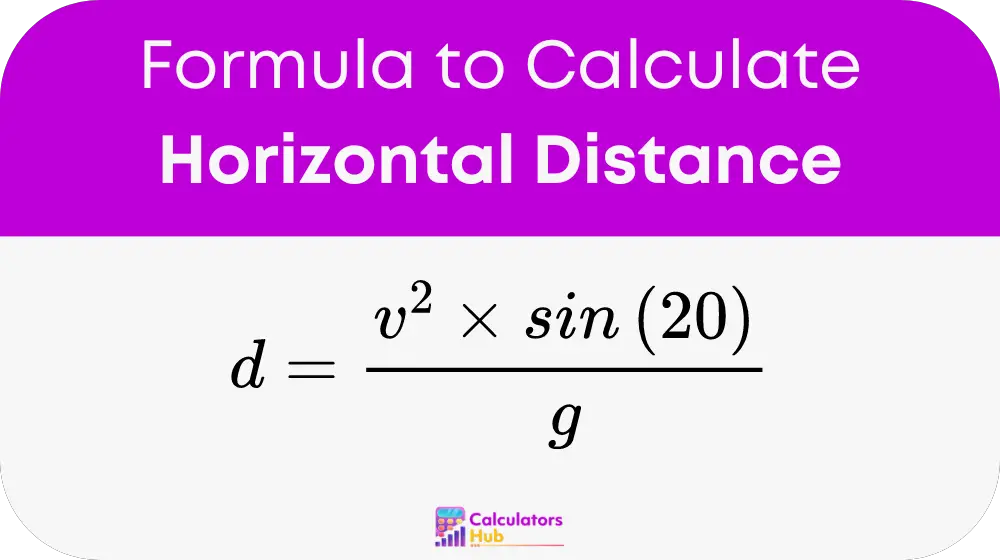A horizontal distance calculator with angle helps you determine how far an object will travel when thrown from a certain height at a specific angle. This tool is vital for predicting projectile paths in physics, optimizing sports techniques, and even in gaming strategies where trajectory planning is essential.
Formula of Horizontal Distance Calculator With Angle
The core formula used in calculating horizontal distance is:

Let’s break down the components:
- v represents the initial velocity of the object. It’s crucial because the speed at which an object is thrown significantly impacts how far it will go.
- θ is the angle at which the object is thrown. For accuracy, this angle must be convert from degrees to radians (θ in radians = θ in degrees × π/180).
- g is the acceleration due to gravity, typically around 9.8 m/s^2 on Earth, affecting how quickly the object falls back to the ground.
Understanding and applying each of these factors accurately ensures that your calculations are both precise and useful.
Table for General Terms
To aid your calculations, here’s a table featuring common terms and their values:
| Angle (Degrees) | Angle (Radians) | Initial Velocity (m/s) | Horizontal Distance (m) |
|---|---|---|---|
| 30 | 0.524 | 20 | 35.35 |
| 45 | 0.785 | 20 | 40.82 |
| 60 | 1.047 | 20 | 35.35 |
Example of Horizontal Distance Calculator With Angle
Let’s calculate the horizontal distance for an object thrown with an initial velocity of 30 m/s at a 45-degree angle:
- Convert the angle to radians: 45° = 0.785 radians.
- Apply the formula: d = (30^2 * sin(2 * 0.785)) / 9.8 = X meters.
Most Common FAQs
Multiply the degree measurement by π/180 to convert it to radians.
The standard gravity used is approximately 9.8 m/s^2, but it can vary slightly depending on geographical location and altitude.
Increasing the velocity will generally increase the horizontal distance, provided the angle and other factors remain constant.